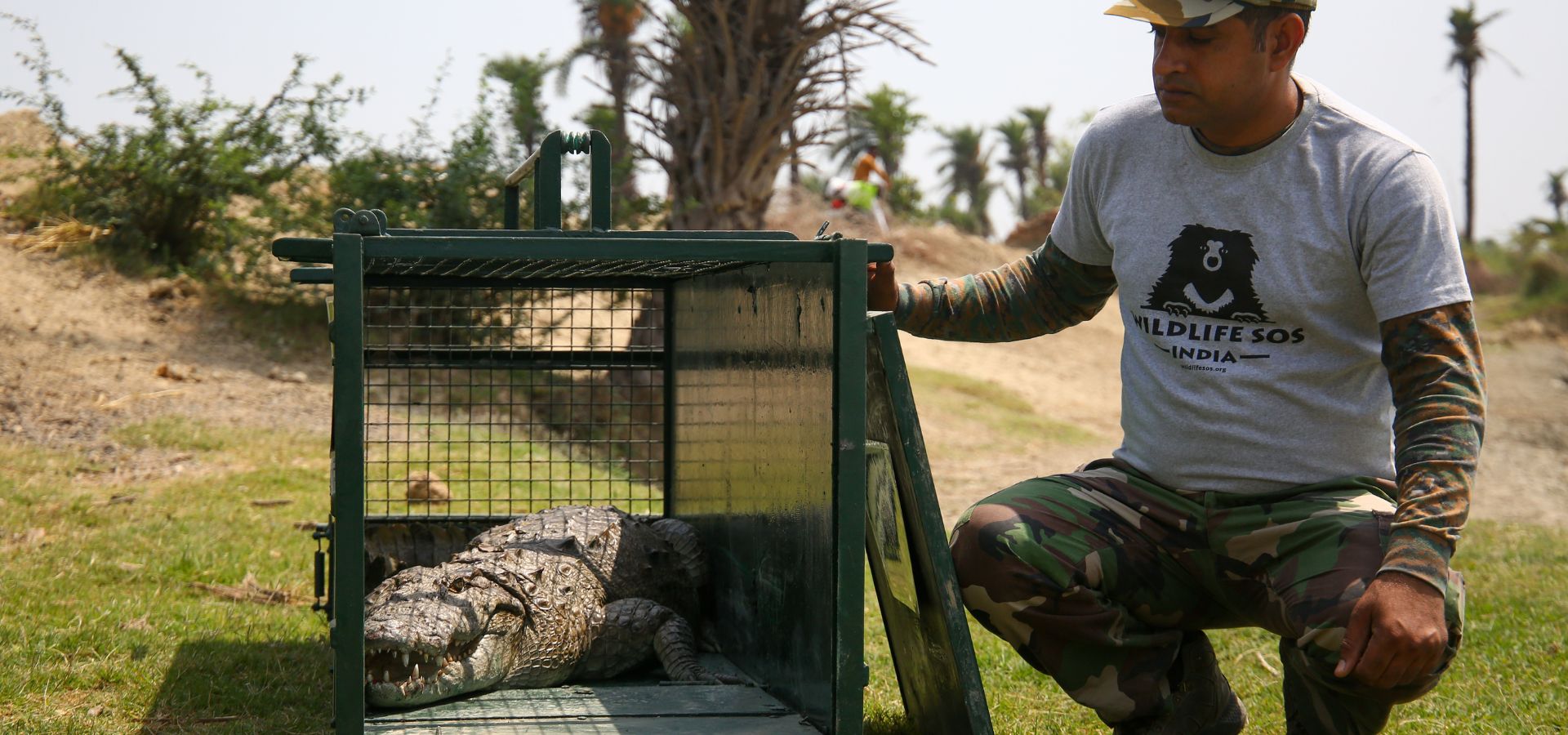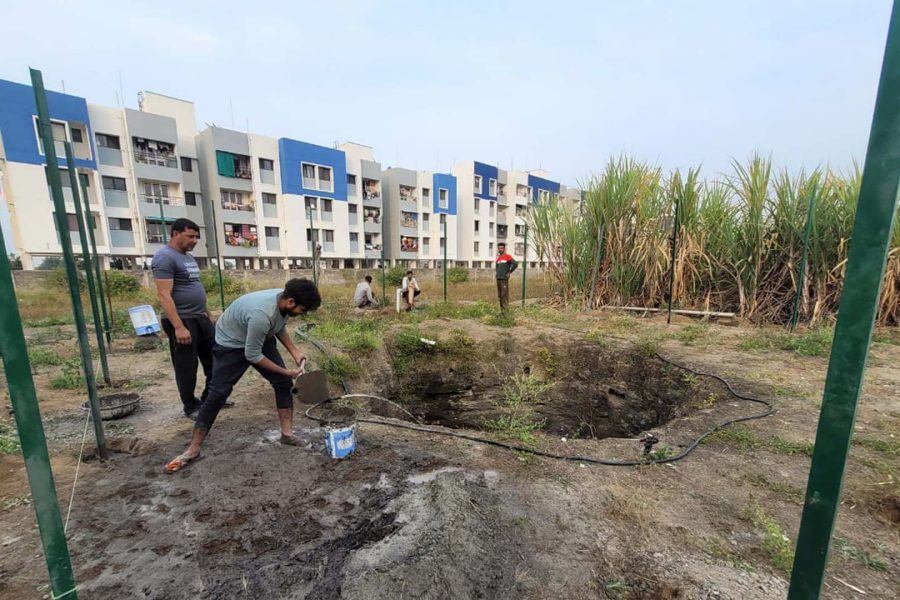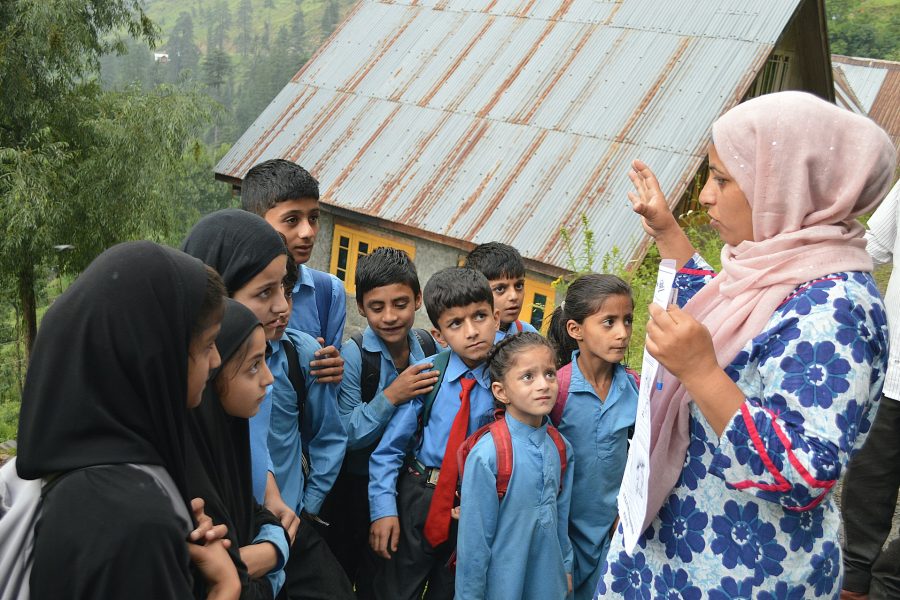India’s population is at 1.45 billion right now and is growing every day. Occupying just 2.4% of the world’s land, the country is home to almost 18% of the global human population. This population density is putting tremendous pressure on wildlife habitats, which is leading to increased encroachment and frequent human-wildlife conflict. Human-wildlife conflict is when encounters between humans and wildlife lead to negative results, such as loss of property, livelihoods, and even life. Defensive and retaliatory killing may eventually drive species in conflict to extinction. Addressing these issues requires a proper understanding of the complexities behind these interactions to develop effective solutions.

Wildlife SOS is committed to resolve conflicts by promoting understanding and sensitivity among people about animals and their behaviour. Active stakeholder engagement through various awareness sessions and training programmes, along with innovative initiatives like radio collaring wild animals in order to prevent conflict, are helping us foster a culture of coexistence, understanding and inclusivity. Simultaneously, we are also constantly examining the roots of prevalent conflicts, and the impact it has on animals.

Reasons behind Conflict
Here are some of the prominent factors that contribute to human-wildlife conflict:
1) Need for Food – Animals venturing into human settlements in search of food has become a very common phenomenon. With agricultural fields expanding, farms that border depleting forests are prone to host wild animals. Elephants enter fields, that were once their migration path, to graze on crops, while leopards stray into villages to hunt livestock, because prey populations in the wild have depleted with the decline of their habitat. These changes are bound to result in close encounters of humans with the wild, which can lead to tragic outcomes for both.

2) Climate Change – One of the most intensifying reasons behind human-wildlife conflict has been climate change. Delayed monsoons or extreme droughts due to shifts in weather patterns and seasons drive animals to seek access to food, water and shelter, which they often find near human settlements.
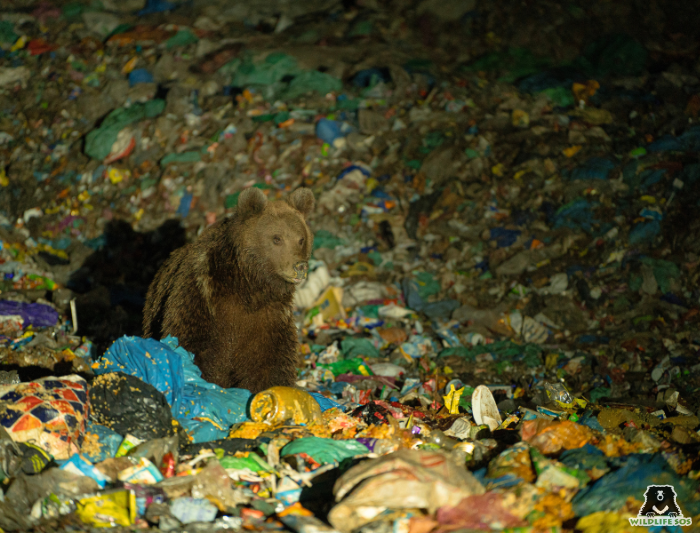
3) Habitat Loss – India has lost 6,68,400 hectares of forest area in between 2015 to 2020. Most of this area had been home to the already declining wildlife population. As forests shrink, these wild animals lose their natural habitats, which pushes them closer to human settlements in search of resources. This becomes particularly concerning for larger species like elephants, leopards, bears, and even tigers, whose territories are fragmented and patterns of movement are disrupted due to unchecked anthropogenic activities.

How Does Conflict Escalate?
To understand human-wildlife conflict, it’s also essential to know that this issue operates on multiple levels:
Disputes – When it comes to safety and conservation of wildlife and their habitats, the most important aspect is to acknowledge the need for coexistence. However, when a farmer wakes up to his crops having been raided by a herd of lost and hungry elephants, it becomes difficult to generate the sensitivity of the situation. Crop-raiding has been reported as the biggest cause of human-elephant conflicts. When elephants take over a farm field, they don’t just destroy the produce, but also create economical repercussions for families, which leads to a bad impression of elephants among the locals. Tragically, over 600 people and 450 elephants lose their lives each year during crop-raiding in Asia, with most cases coming from India and Sri Lanka. Financial damages caused by crop-raiding by elephants can cost a lot.
In a project to allay persistent human-elephant conflict taking place in villages of Chhattisgarh, Wildlife SOS and the state forest department came together to initiate an Early Warning System (EWS) to alert locals on the movement of the elephant herd. This was done by radio-collaring the herd’s matriarch so that by tracking her, villagers could be duly informed about the herd’s location and prevent any potential conflict.
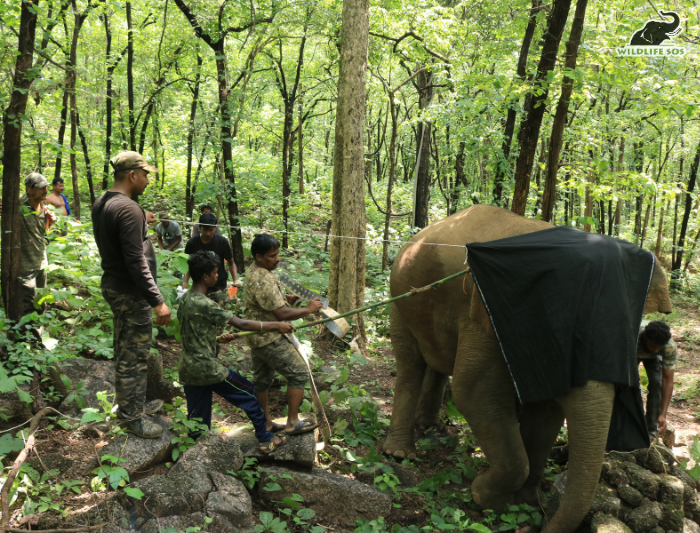
2) Underlying Conflicts – If the initial disputes are left unresolved, frustration builds, creating a sense of resentment towards a particular wild animal. In Maharashtra, leopard encounters are a prime example. With loss of habitat, leopards prey on livestock, causing panic among villagers residing closer to forested areas, which often results in adverse outcomes. Another reason behind sudden encounters is the rapid expansion of agricultural lands into wild forests. This leads mother leopards to look for safe refuge for her cubs, which she finds under stalks of sugarcane in fields. As an attempt to mitigate conflict, Wildlife SOS conducts awareness sessions and workshops on preventive measures that can help communities react and respond to such situations in a cautious and appropriate manner.
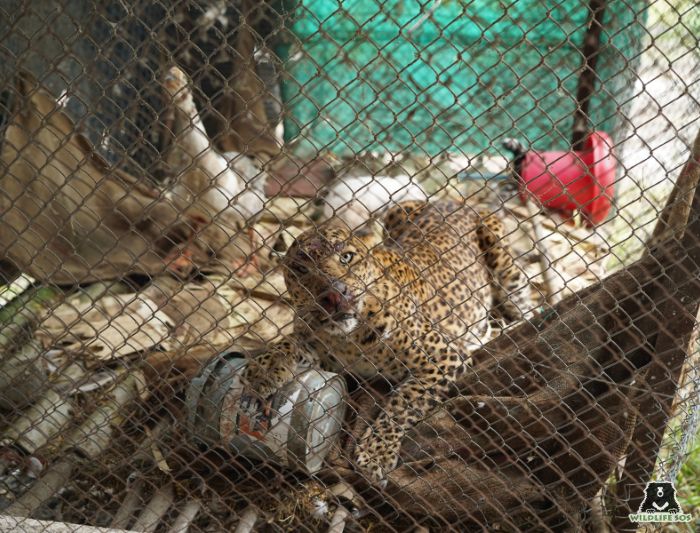
3) Deep-rooted Conflicts – The most complex of conflicts arise from issues that require a deep understanding of the context. In some cases, conservation intentions may impact the social, cultural and economic practices of local communities. For instance, loss of wild habitat has led to anger among locals and anguish for animals in the Sundarbans, as each depend on the forest for their survival. While predators like crocodiles and Bengal tigers rely on this mangrove habitat for prey, for humans, it is the collection of honey and fish from forests that can economically sustain their families. However, the deeply entrenched belief that ‘Bonbibi’, the soul of the forest, is responsible for tragic outcomes of encounters, and that access to forest is important for the community for their livelihood, are causing resistance among people to gain knowledge and insights into rising human-wildlife conflict. A resolution to this, therefore, remains in limbo.
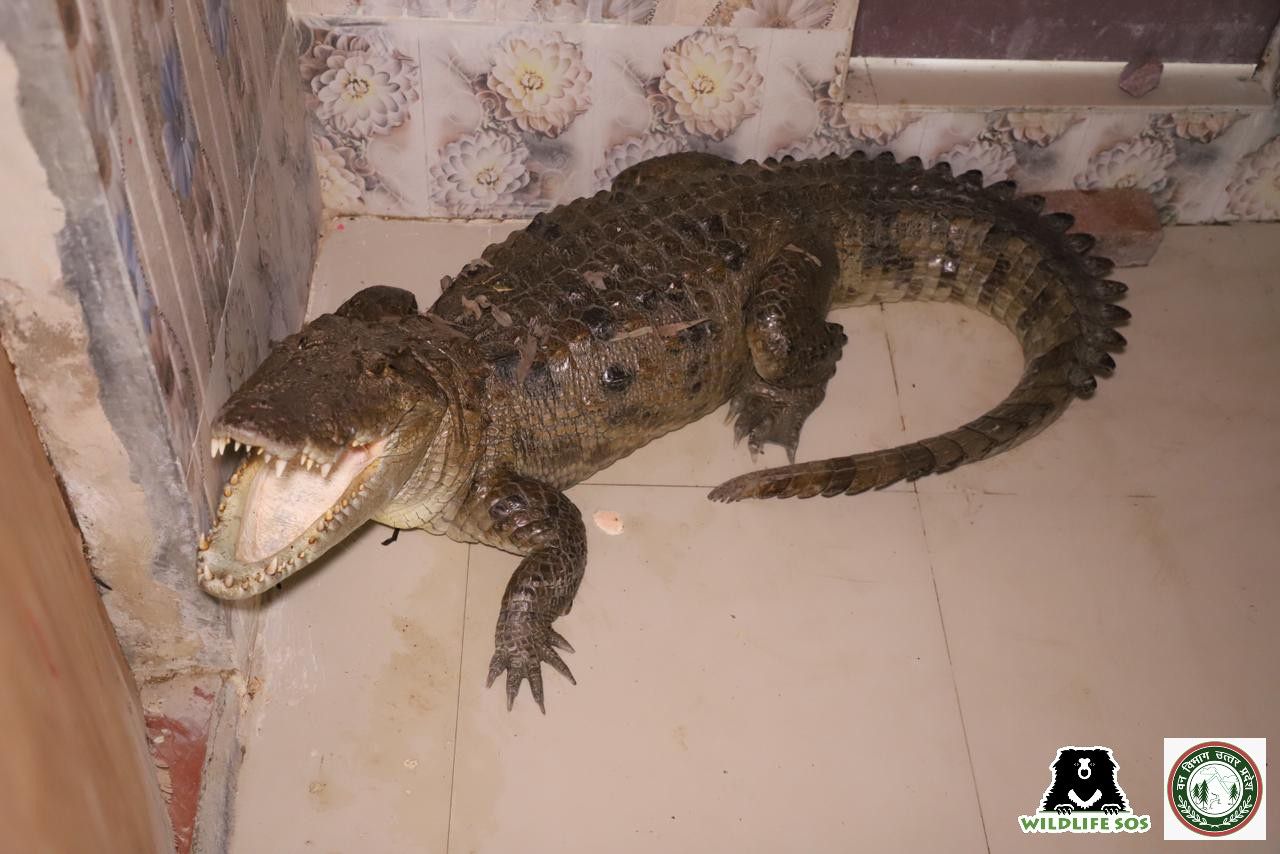
Conflict Mitigation Efforts by Wildlife SOS
Wildlife SOS has implemented a range of initiatives to address and mitigate the complex issue of human-wildlife conflict across India. These efforts are meant to not only protect wildlife, but also to promote safety and well-being for communities that are prone to wildlife interactions. On-ground rescue operations along with education and awareness sessions with local stakeholders like villagers, farmers, students and forest officials are taking place on a regular basis to tackle this issue. Some of the efforts are as follows:
1) Community Involvement – We, at Wildlife SOS, acknowledge the importance of community-based conservation (CBC). In order to mitigate the human-wildlife conflict situation, it is essential to bring the people residing near wildlife habitats under the umbrella of conservation, while also understanding their needs and aspirations.
In 2006, Wildlife SOS pioneered a project aimed at the conservation of Ramdurga Valley in Karnataka, a barren land that was once a flourishing habitat for the wild sloth bears. The Ramdurga Valley Project took a community-centred approach, empowering local residents to act as frontline conservationists by actively patrolling the area. This helped to curb activities like wood-cutting, forest fires, poaching, and encroachment, resulting in the successful comeback of the region’s wildlife.

2) Education and Awareness – Educational initiatives are key to addressing misconceptions about wildlife. Wildlife SOS organises workshops to spread knowledge about animal behaviour, informing residents on how to tackle or prevent conflicts. Such interactive sessions are held with an aim to foster a more tolerant view towards these animals. By addressing myths and sharing practical advice, these outreach events help communities acquire much-needed information to allay conflict.

Alongside community outreach, Wildlife SOS also collaborates closely with forest departments, for basic training and workshops on how to conduct rescues as well as giving them practical experience with various rescue tools like snare poles, safety nets, net guns, tranquilliser guns, and anti-scratching jackets.
These efforts help the stakeholders to play a part in wildlife conservation and mitigating human-wildlife conflict in the best way possible.

3) Research and Technology – Today, technology and research is playing a crucial role in mitigating human-wildlife conflict by providing real-time data and insights that help us shape our conservation strategies. Effective use of radio-collars, ear tags, microchips and leg bands allows the tracking of animals in order to study their movements, behaviour, habitat preferences, appetite and more. Data and information gathered through innovative use of technology can dispel misinformation and ignorance, and initiate conservation initiatives for endangered wild animals.
Through these initiatives, Wildlife SOS is not only tackling immediate conflict between people and wildlife, but also laying the groundwork for lasting coexistence. By engaging communities, raising awareness, and fostering partnerships with various stakeholders, we are working towards a balanced approach that respects both human needs and wildlife conservation.
Wildlife SOS has dedicated centres to provide aid and long-term care to sloth bears, leopards and elephants rescued from severe conflict situations. Our teams conduct rescue, treatment, and release of animals in distress. The organisation runs 24×7 rescue hotlines in the following regions so that spotting wildlife in human settlements can be addressed with expertise:
Helpline Numbers:
Delhi-NCR: +91-9871963535
Agra, Uttar Pradesh: +91-9917109666
Vadodara, Gujarat: +91-9825011117
Srinagar, Jammu & Kashmir: +91-7006692300/ +91-9419778280
Elephant Helpline: +91-9971699727

